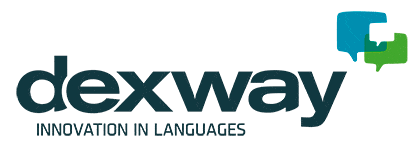Technology now holds a vitally important place in learning, and no classroom would be complete without it. The practice of incorporating digital learning practices, often with the assistance of an online learning platform, is known as blended learning.
Some education providers use blended learning techniques within class time to enhance activities. Other education providers use an online learning platform to offer additional distance learning tools for their students to access outside of timetabled class time.

There is also a growing trend for using an online learning platform to introduce students to a flipped classroom experience. This involves inviting students to watch instructional lectures via video in their own time, in order to free up class time for group activities and discussion.
Both blended learning ideas in general and flipped classroom methodology play a key role in language schools.
There are a wide variety of reasons why blended learning is a valuable method for language schools.
Blended learning can help to maximise learning time
Learning a language can take a long time. Some estimates suggest that it can take around 500 hours to achieve a basic level of fluency. Achieving this through a weekly language class alone could take years.
However, students who are given the opportunity to supplement their study by use of an online language platform are likely to reach this point far earlier. For example, the Dexway method gives students access to learning tools and activities both on their computer and on devices such as tablets and smartphones which they can use on the go.
With these tools on hand whenever they need them, students are far more likely to maximise their learning time and get a better grasp of their chosen language in less time.
Blended learning can help to manage task differentiation
It would be nice if every language class was made up of students that were all at exactly the same level. In this scenario, all learning content would be perfectly aimed at the students’ ability level. However, in reality this is very unlikely to be the case.
Even if all students start a course at the same level, individual students will have different strengths and weaknesses, different aptitudes for the new language, and will spend a different amount of time on self study.
Blended learning or flipped classroom methodology can make it far easier for teachers to manage this. Using an online learning platform in the classroom will not only make it easier for teachers to set an appropriate ability level for each student, they’ll also be able to see at a glance what level everyone is working at and where each students’ weak areas are.
Blended learning can support linguistic immersion
There are many different ways to learn a language. Some studies have suggested that one of the very best ways to do this is to choose a method involving linguistic immersion.
Linguistic immersion is probably so effective because it mimics the way we all learn languages as a child. Instead of gradually learning grammar rules and vocabulary, linguistic immersion programmes focus on surrounding language students with the studied language.
Many modern language courses focus on linguistic immersion in the classroom. Using an online learning platform as a blended learning or flipped classroom tool can also help with this. You’ll find that linguistic immersion is a very key principle in the Dexway method. Dexway courses include learning and revision exercises that use linguistic immersion principles to teach new language skills and strengthen existing ones.
Blended learning can offer new conversational opportunities
It is near-impossible to learn a language without having plenty of opportunities to engage in conversation using it. Flipped classroom methodology and blended learning principles can give students a greater number of chances to engage in this.
An online learning platform free up more class time for in person discussion. This is hugely beneficial for the development of both speaking and listening skills.
There is another way that an online learning platform can add value in this way. The Dexway method particularly prioritises conversational opportunities. It uses virtual classrooms to offer language students the chance to enter into a conversation with other students worldwide, twenty four hours a day, three hundred and sixty five days a year.
An online learning platform could be used in the classroom to allow students to enter conversation with new people, which could be a great way to add new interest and excitement to their studies.
How should your language school get started with blended learning?
Is your language school looking for a new tool to offer blended learning and flipped classroom teaching to it’s student body? The Dexway method could be just what you’re looking for. Why not read more about why our blended learning tools are so effective?
If you found this article interesting, you might be interested in:
